Folwell Hall
Introduction
Text-to-speech Audio
Images
Construction of Folwell Hall began in 1905 and was completed in 1907

It was originally meant to replace Old Main, which burned down in 1904
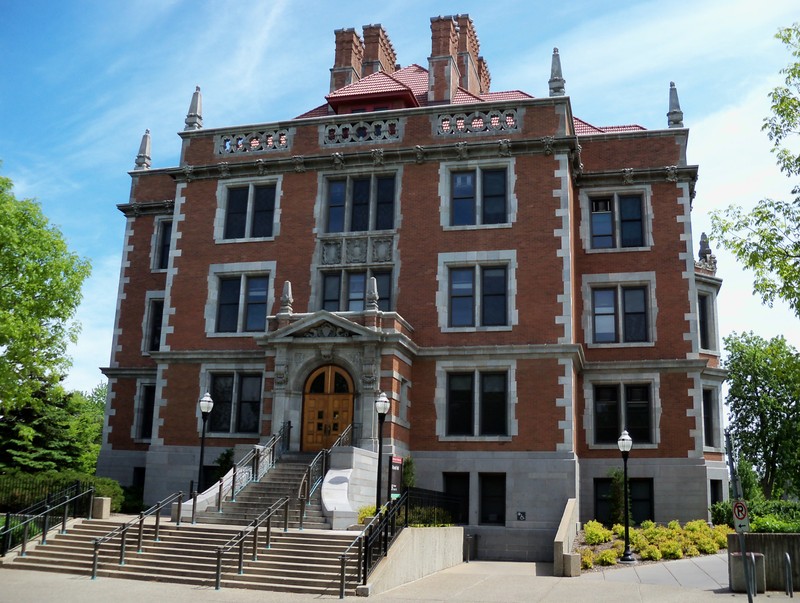
Only two of the building's 26 chimenys are connected to fireplaces, while the rest are used for ventilation
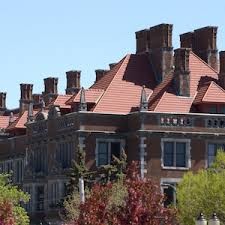
Terra cotta carvings of mythological figures and animals adorn the building
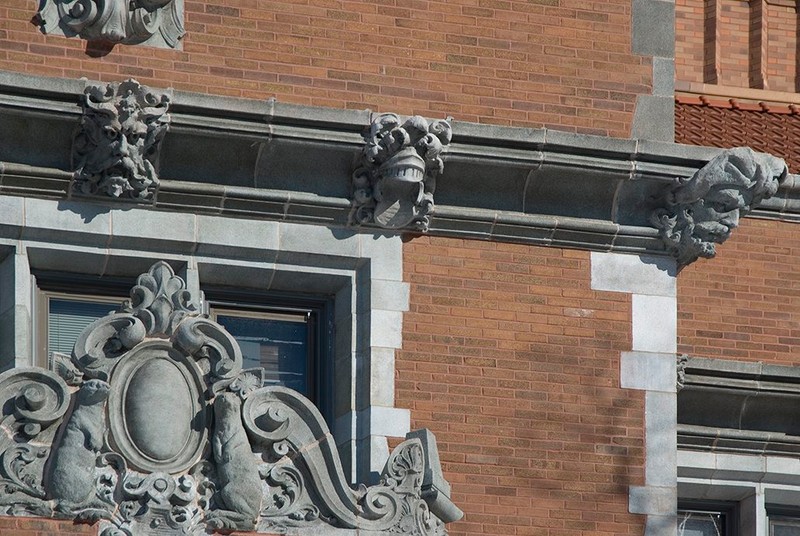
The main corridor has marble walls and oak woodwork
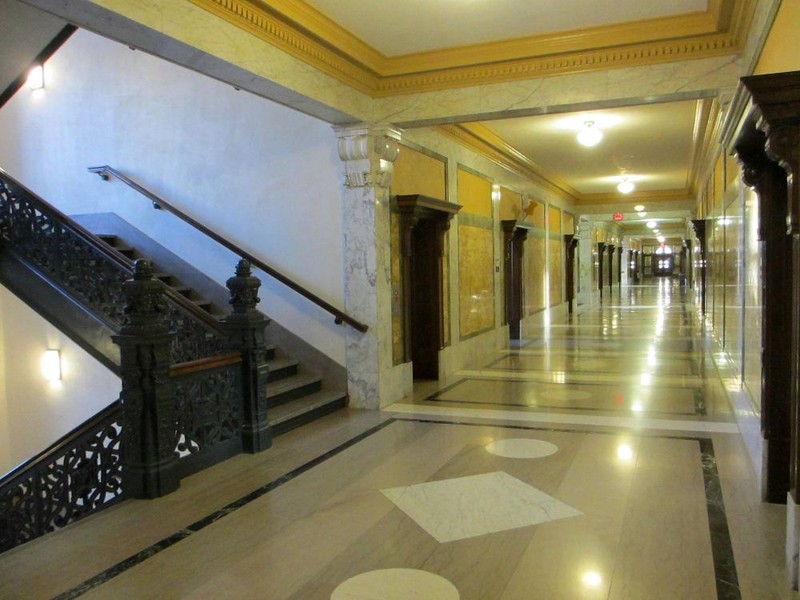
Interior renovation of Folwell Hall was completed in 2011
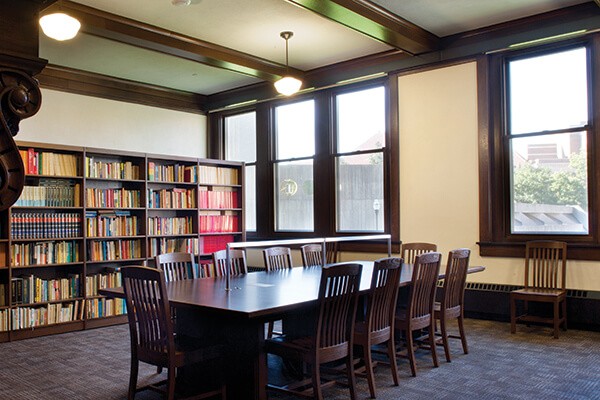
Minneapolis architect Clarence H. Johnston, Sr., designed Folwell Hall in the English Renaissance Revival style
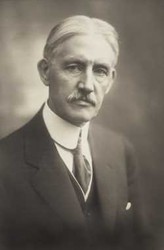
The building is named after William Watts Folwell, the University's first president
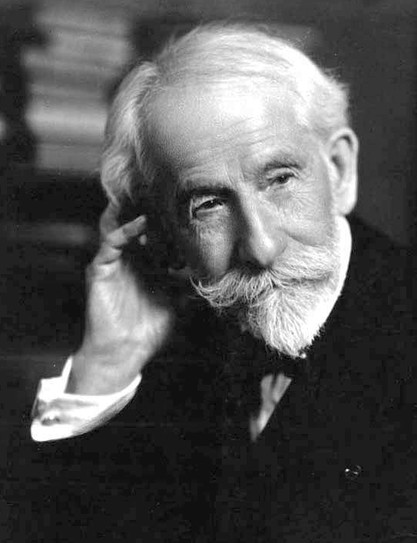
Backstory and Context
Text-to-speech Audio
Old Main was the first building on campus, and it served a variety of purposes for the University since its construction in 1856. After a series of fires, it finally burned down in 1904, and its many departments and offices needed a new home. Folwell Hall was intended to serve as a “New Main” building that would take in many of its predecessor’s tenants. In 1905, the state legislature of Minnesota appropriated $350,000 for the construction of Folwell Hall, and an additional $65,000 was made available due to insurance payments for Old Main. The combined $415,000 made Folwell Hall the most expensive building on campus at the time, and its elaborate design was meant to reflect this grandeur.
The architect Clarence H. Johnston, Sr., who had previously worked on the campus’s School of Mines Building, designed Folwell Hall in the English Renaissance Revival style, combining elements of the Elizabethan and Jacobean modes. The three-story building is primarily made of brick, with foundations of granite and decorative elements of gray terra cotta. The terra cotta designs feature representations of mythological figures, gargoyles, cherubs, and animals, including the University’s mascot, the gopher. Another striking feature are the 26 chimneys, only two of which connect to fireplaces in the building, while the rest are used for natural ventilation. Due to the fate of Old Main, most of the floors and walls were made of fireproof concrete and tile, though the main floor corridor has oak woodwork and marble panels.
Folwell Hall was named after the University’s first president, William Watts Folwell, who led the school from 1869 until 1884. In its early years, the building took in many of the departments, offices, and services that were previously located in Old Main. These included University publications like the Alumni Magazine and the Gopher Yearbook, various literary societies, and the University post office. A number of deans offices and academic departments, ranging from Anthropology to Philology, were also located in Folwell Hall, at least temporarily. Due to overcrowding, many of these eventually moved into other facilities, and most of the disciplines that remained were related to foreign languages. Today, Folwell Hall is considered “the largest foreign language and culture training center” in the state of Minnesota.
From 2008 until 2011, the Minneapolis architectural firm Miller Dunwiddie oversaw a massive, multimillion dollar renovation of Folwell Hall. Both the exterior and interior were upgraded, while many of the building's historic features were preserved. Folwell Hall reopened in September of 2011, and still houses a majority of the University’s foreign language departments: Asian Languages and Literatures; French and Italian; German, Scandinavian, and Dutch; Slavic Languages and Literatures; and Spanish and Portuguese. Added to the National Register of Historic Places in 1984, it is now a part of the revitalized humanities hub in the Knoll area of campus.
Sources
- State Historic Preservation Office Staff. National Register of Historic Places Inventory -- Nomination Form, National Park Service . August 23rd 1984. Accessed April 30th 2020. https://npgallery.nps.gov/NRHP/GetAsset/33466d89-64c2-4ea4-9bd8-1b3f574c3c96.
- Folwell Hall, University of Minnesota, East Bank Campus, 9 Pleasant St SE, Minneapolis, Minnesota, Placeography . Accessed April 30th 2020. http://www.placeography.org/index.php/Folwell_Hall%2C_University_of_Minnesota%2C_East_Bank_Campus%2C_9_Pleasant_Street_SE%2C_Minneapolis%2C_Minnesota.
- Friedrich, Alex. The U's Folwell Hall for languages to reopen Sept. 6 following renovation, Minnesota Public Radio. August 31st 2011. Accessed April 30th 2020. https://blogs.mprnews.org/oncampus/2011/08/the-us-folwell-hall-for-languages-to-reopen-sept-6-following-renovation/.
- Folwell Hall, University of Minnesota, Miller Dunwiddie. Accessed April 30th 2020. http://www.millerdunwiddie.com/projects/folwell-hall-university-of-minnesota/#sthash.O0kQERvZ.PUCMAgWc.dpbs.
- Board of Regents of the University of Minnesota. Biennial Report of the Board of Regents of the University of Minnesota, to the Governor. 1908.
- General Alumni Association of the University of Minnesota. Folwell Hall. The Minnesota Alumni Weekly. November 10th 1913. 72.
http://www.millerdunwiddie.com/projects/folwell-hall-university-of-minnesota/#sthash.lPenYVSh.dpbs
https://commons.wikimedia.org/wiki/File:Folwell_Hall_Minnesota_6.jpg
https://ccaps.umn.edu/category-tag/ccaps-alumni?page=1
https://bostonvalley.com/portfolio-item/folwell-hall/
http://www.millerdunwiddie.com/projects/folwell-hall-university-of-minnesota/#sthash.oSpUvJVv.dpbs
https://www.kolbewindows.com/gallery/university-of-minnesota-folwell-hall
https://www.mnopedia.org/person/johnston-clarence-h-1859-1936
https://en.wikipedia.org/wiki/William_Watts_Folwell
